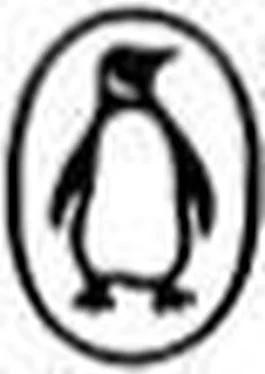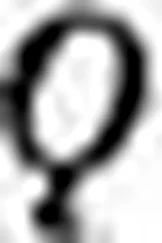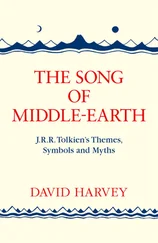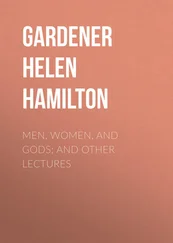Davidson, H. - Gods and Myths of Northern Europe
Здесь есть возможность читать онлайн «Davidson, H. - Gods and Myths of Northern Europe» весь текст электронной книги совершенно бесплатно (целиком полную версию без сокращений). В некоторых случаях можно слушать аудио, скачать через торрент в формате fb2 и присутствует краткое содержание. Жанр: Старинная литература, на английском языке. Описание произведения, (предисловие) а так же отзывы посетителей доступны на портале библиотеки ЛибКат.
- Название:Gods and Myths of Northern Europe
- Автор:
- Жанр:
- Год:неизвестен
- ISBN:нет данных
- Рейтинг книги:5 / 5. Голосов: 1
-
Избранное:Добавить в избранное
- Отзывы:
-
Ваша оценка:
- 100
- 1
- 2
- 3
- 4
- 5
Gods and Myths of Northern Europe: краткое содержание, описание и аннотация
Предлагаем к чтению аннотацию, описание, краткое содержание или предисловие (зависит от того, что написал сам автор книги «Gods and Myths of Northern Europe»). Если вы не нашли необходимую информацию о книге — напишите в комментариях, мы постараемся отыскать её.
Gods and Myths of Northern Europe — читать онлайн бесплатно полную книгу (весь текст) целиком
Ниже представлен текст книги, разбитый по страницам. Система сохранения места последней прочитанной страницы, позволяет с удобством читать онлайн бесплатно книгу «Gods and Myths of Northern Europe», без необходимости каждый раз заново искать на чём Вы остановились. Поставьте закладку, и сможете в любой момент перейти на страницу, на которой закончили чтение.
Интервал:
Закладка:
May every field of battle be piled with your corpses,
And may Odin let the spear fly according to my words.
Here the flinging of a spear, like the marking with a spear at time of death, is attributed to Odin himself. Odin possessed the great spear Gungnir, and this was evidently used to stir up warfare in the world. In Vǫluspá , the cause of the first war among the gods is said to be brought about by Odin flinging his spear into the host. Thus up to the end of the heathen period the picture of the god as fierce provoker of war and giver of victory persisted in the north.
2. The Germanic War Gods
We have good reason to believe that Odin as god of war has developed out of earlier conceptions among the Germanic peoples on the Continent of the god who ruled over the battlefield. The god Wodan, or Wotan, had the same type of sacrifice associated with his name. The Heruli, for instance, worshippers of Wodan, practised a double ritual of stabbing and burning. Among them the victims were not necessarily captives taken in war, but those also who were on the point of death from illness or old age. According to Procopius, writing in the sixth century, 1they were accustomed to lay such men on the funeral pyre and to stab them to death before their bodies were burned.
We come across continual references to terrible sacrifices in honour of ‘Mars’ among the Germanic peoples. Jordanes, also in the sixth century, 2wrote of the worship which the Goths gave to the god of war, who, they believed, had been born among them:
They thought that he who is lord of war ought to be appeased by the shedding of human blood. To him they devoted the first share of the spoil, and in his honour arms stripped from the foe were suspended from trees.
Even more terrible rites were practised by the Cimbri, who may have been a Celtic tribe, but were certainly in close contact with the Germans. Strabo 3reported of them that they hanged their prisoners up over great bronze bowls; their priestesses, who were old women dressed in white, climbed a ladder and cut the throats of the hanging men so that their blood was received in the bowls below. Orosius, writing in the fifth century, gives a vivid account of the actions of these same Cimbri after they had won a great victory in 105 B.C.:
The enemy captured both camps and acquired an enormous quantity of booty. In accordance with a strange and unusual vow, they set about destroying everything which they had taken. Clothing was cut to pieces and cast away, gold and silver was thrown into the river, the breastplates of the men were hacked to pieces, the trappings of the horses were broken up, the horses themselves drowned in whirlpools, and men with nooses round their necks were hanged from trees. Thus there was no booty for the victors and no mercy for the vanquished.
History of the World , v, 16
This account of wholesale sacrifice both of living creatures and material things to the god of war may be compared with a description given by Tacitus of a battle between two Germanic tribes, the Hermundari and the Chatti, in the first century. They were fighting for possession of the river which flowed between their lands, which was particularly valuable because of the salt to be obtained there, and also because part of its course passed through what was accounted holy ground: ‘They cherished a superstition that the locality was specially near to heaven’ ( Annals , XIII, 57). Accordingly both sides vowed to sacrifice the enemy to Mars and Mercury in return for victory. This was a truly fearful vow, implying as it did the sacrifice of the entire beaten side, with their weapons, their horses, and all else that they possessed. Yet the Hermundari, who won the battle, are said to have carried it out, while the Romans cynically applauded the liquidation of troublesome barbarians in the name of religion.
These isolated references to sacrificial practices among the Germanic peoples in heathen times suggest something of the terror associated in men’s minds with the god of battle. Discoveries made in the peat bogs of Denmark give us startling confirmation of the power which he once wielded. The peat soil has preserved piles of booty such as must represent the spoils of many battles, lying not at random, but as if arranged deliberately in some kind of order by the victors. At the four main finds, at Thorsbjerg, Vimose, Nydam, and Kragehul, there was an impressive amount of material, including weapons, armour, clothes, ornaments, tools, pottery, and animal bones. The largest collections must have been built up over a number of years, and the objects left in the holy places gradually sank into the marshy soil until they were hidden from view. Sometimes weapons were bent and broken and rendered useless before they were laid down. In 1950 a fifth discovery of this kind was made at Illerup, 1and careful excavation made it possible to reconstruct what had taken place. Here the equipment of about seventy warriors had been burned on a pyre, and the swords and shields collected from the ashes, deliberately bent and dented, and carried into the middle of the bog by means of planks laid down on the marshy ground. Some of the weapons were flung into a deep pool, and others left lying on the earth near by, in a spot still reputed to be haunted. In this case the spoil was probably that taken in one battle only, fought about A.D. 400.
We know that mailcoats and weapons were rare and costly treasures, and that the many swords sacrificed at Illerup represented much wealth. Yet men felt impelled to make these strange sacrifices in return for victory, and continued to do so in Denmark from the second to the sixth century after Christ. The explanation given in the literature is that they did this in order to placate the god of battle, perhaps like the Hermundari in the fulfilment of a vow once victory had been won. We do not know what happened to the owners of the swords and mailcoats, spears and horse-trappings preserved in the peat, but the implication is that if not already killed in battle they met with an unpleasant death as part of the expensive sacrifice to the war god.
Tacitus tells us that the Hermundari and the Chatti sacrificed to Mars and Mercury in return for victory. There is little doubt that Mercury represented the Germanic god Wodan at the time when Tacitus wrote. In England the same god, Woden, gave his name to the fourth day of the week, Wednesday, the day which in France is called Mercredi after the Roman god. Just as Odin was looked on as the divine ancestor of the Swedes, so Woden was believed to be the founder of many royal dynasties. Most of the Anglo-Saxon kings looked back to him as their divine ancestor. The reason for his identification with Mercury will be discussed more fully in a later chapter (p. 140).
At the time of Tacitus however there is reason to believe that the Roman god of war, Mars, was identified not with Wodan, but with another Germanic god, Tîwaz. Odin in fact appears to be the successor of both Wodan and Tîwaz, retaining some of the qualities and attributes of both these gods. In Snorri’s account Tîwaz appears as Tyr. He is only a shadowy figure, but Snorri mentions that men prayed to him for victory, and also that he was renowned for his wisdom as well as for his valour. Tîwaz in his day must have been a very great power among the heathen Germans. The third day of the week, sacred in Rome to Mars, was called after him throughout the Teutonic world, so that against Mardi in France we have Tuesday in England. In Old Norse his name was used as a synonym for ‘god’, and Odin bore among his titles that of Sigtýr , the Tyr , or god, of victory. The name Tîwaz is related to the Greek Zeus, and to the Roman Jupiter (who was originally Dyaus pitar , father Dyaus). All three are thought to be derived from dieus , the Indo-Germanic word for god, which stands also for the shining heaven and the light of day. It is probable that Tîwaz was the supreme sky god of the Germans as well as their god of battle.
Читать дальшеИнтервал:
Закладка:
Похожие книги на «Gods and Myths of Northern Europe»
Представляем Вашему вниманию похожие книги на «Gods and Myths of Northern Europe» списком для выбора. Мы отобрали схожую по названию и смыслу литературу в надежде предоставить читателям больше вариантов отыскать новые, интересные, ещё непрочитанные произведения.
Обсуждение, отзывы о книге «Gods and Myths of Northern Europe» и просто собственные мнения читателей. Оставьте ваши комментарии, напишите, что Вы думаете о произведении, его смысле или главных героях. Укажите что конкретно понравилось, а что нет, и почему Вы так считаете.












